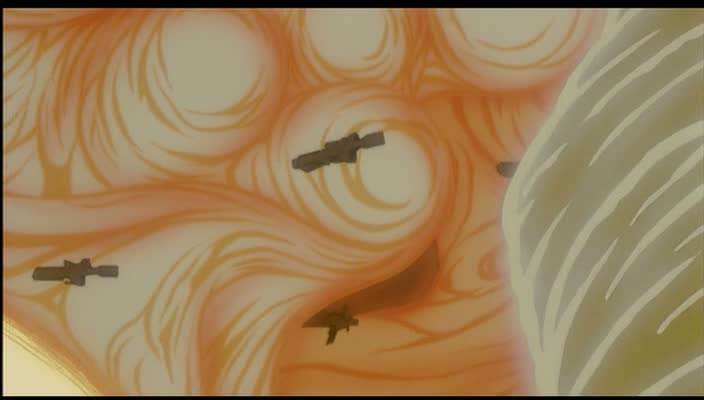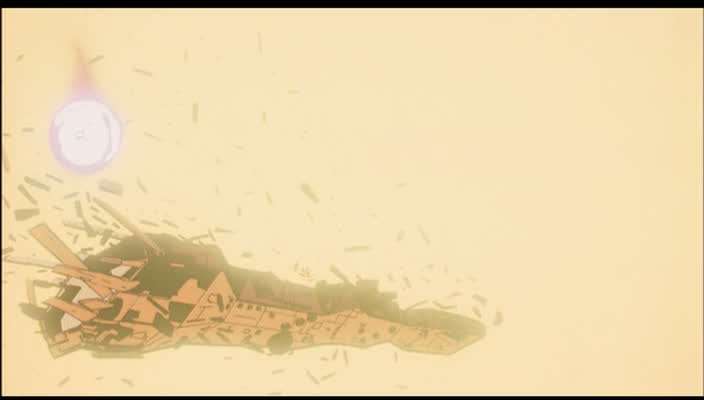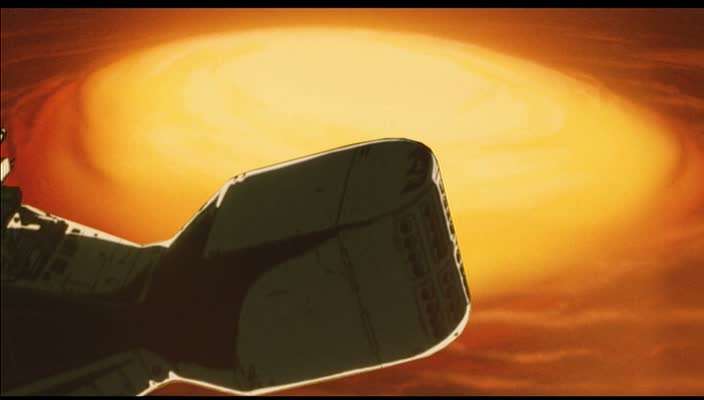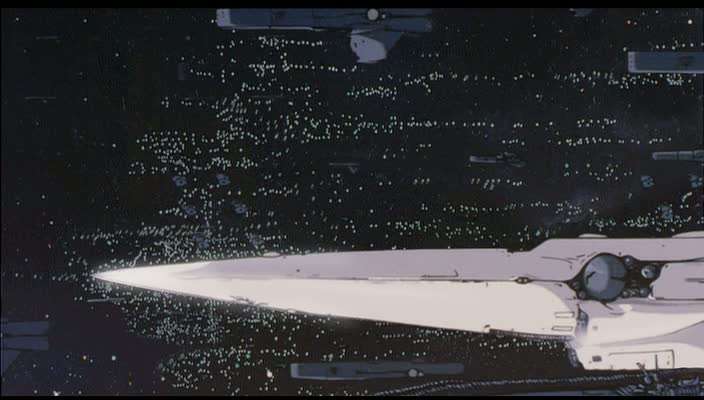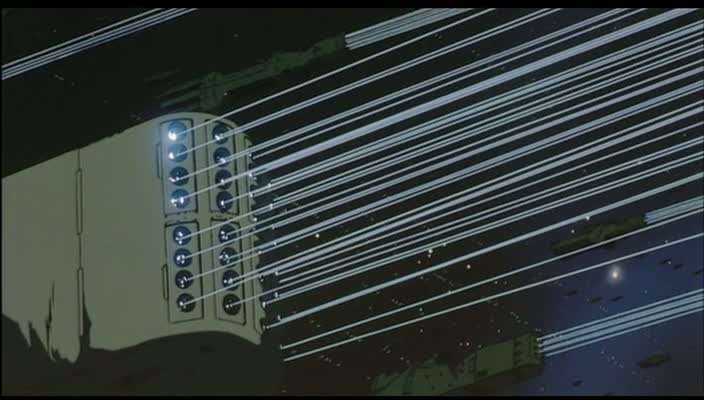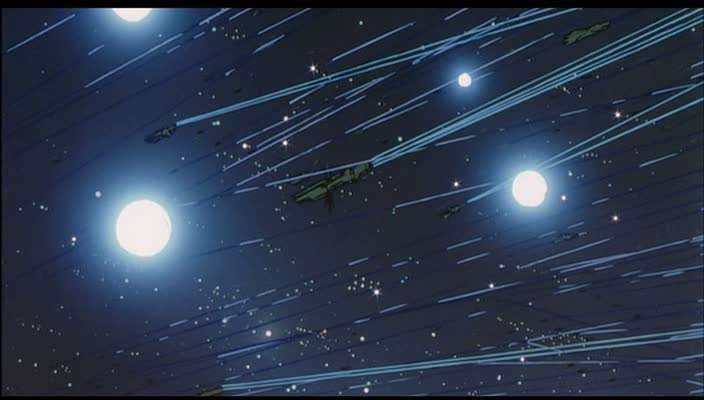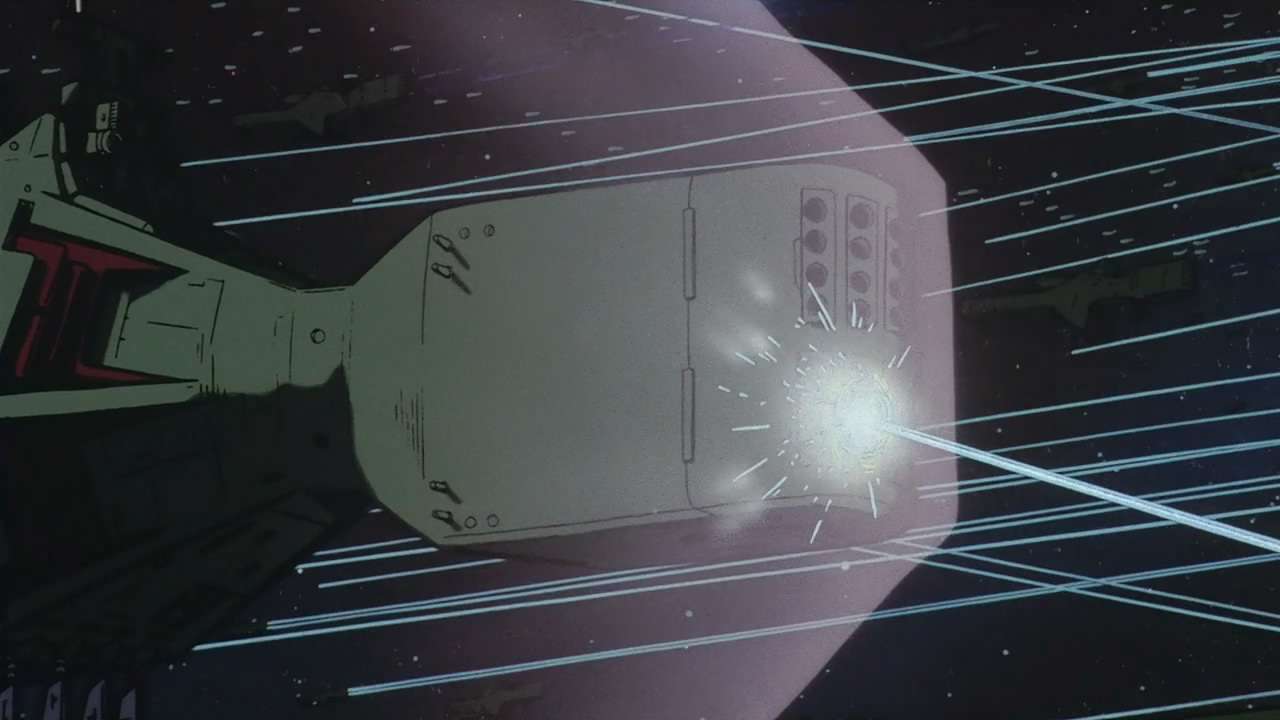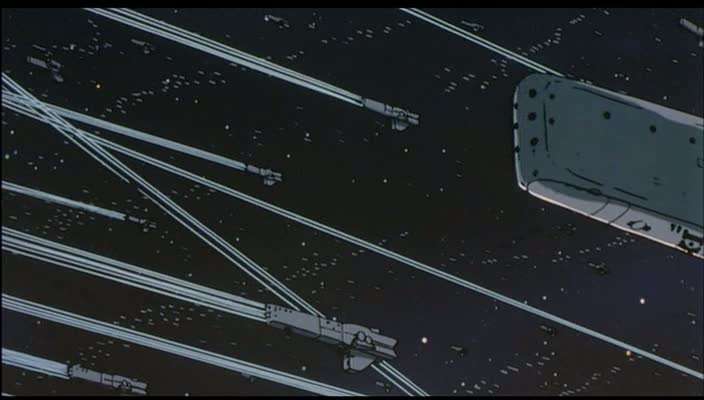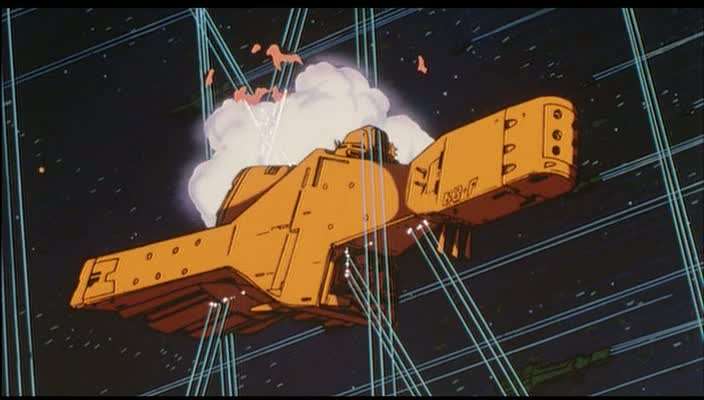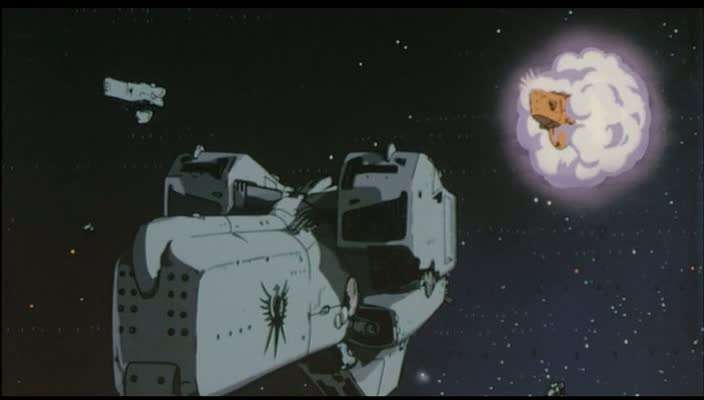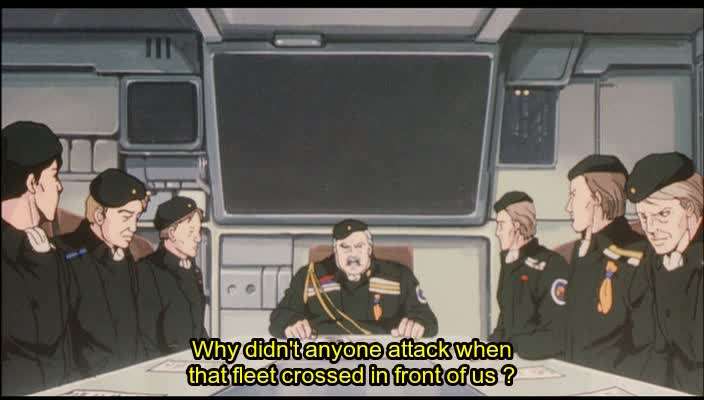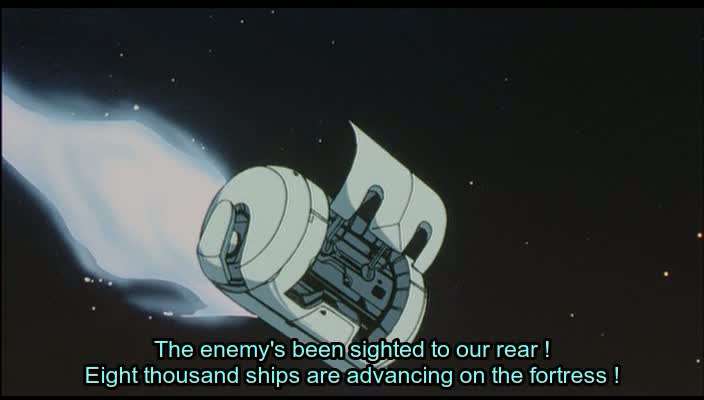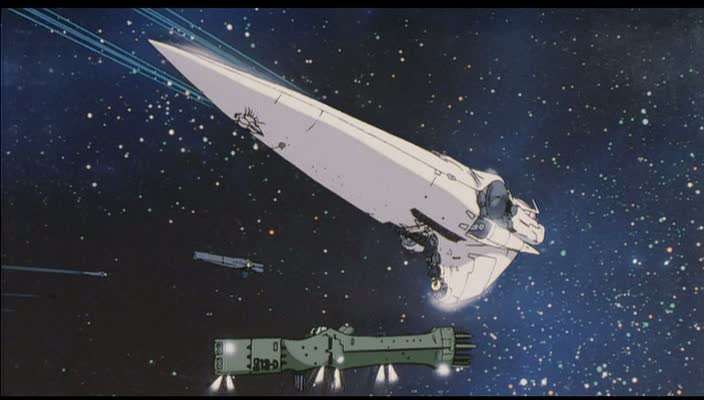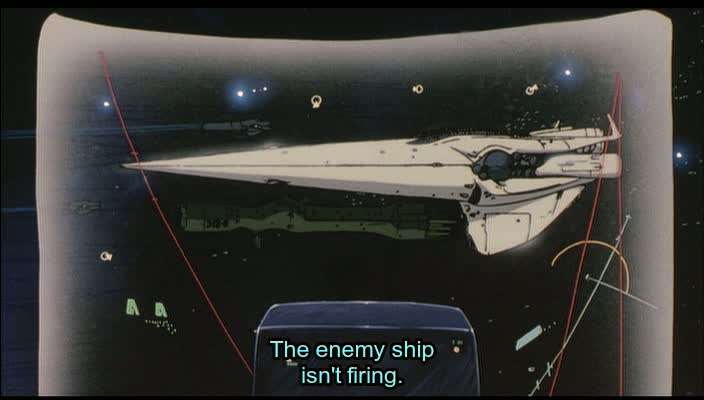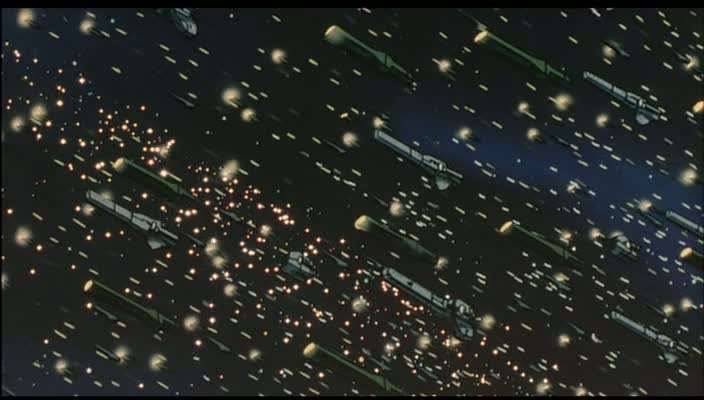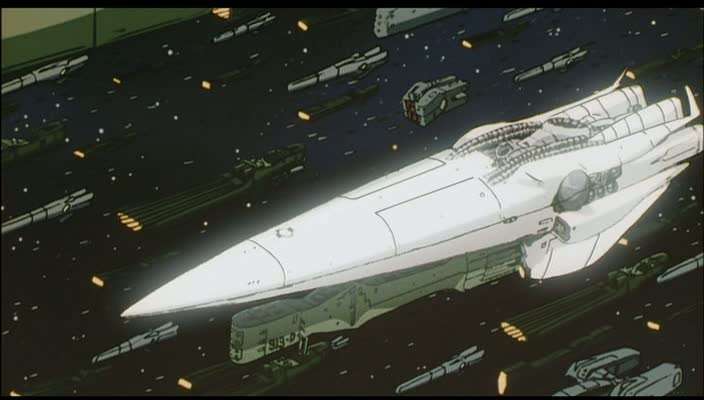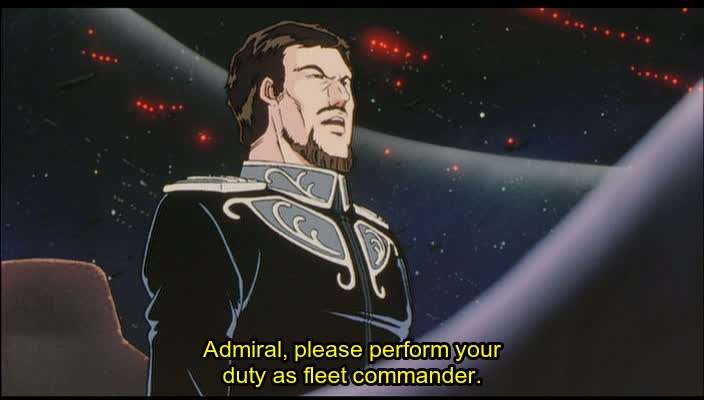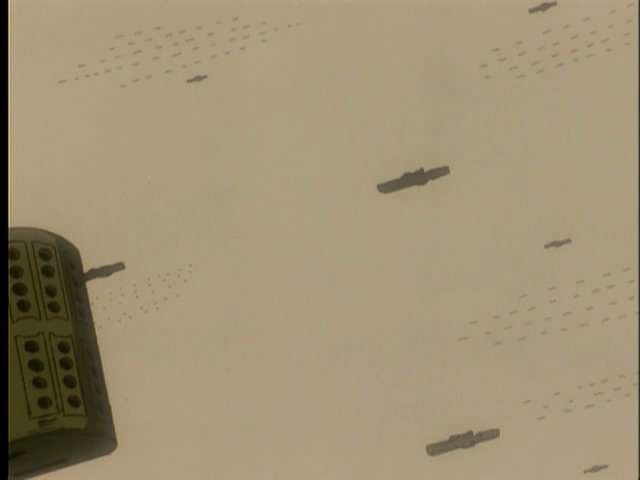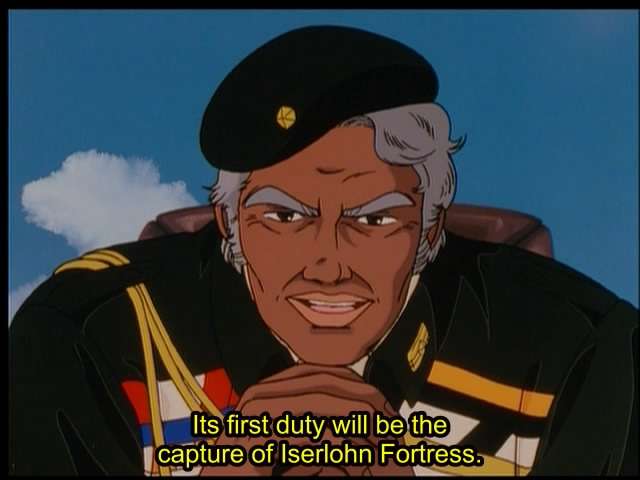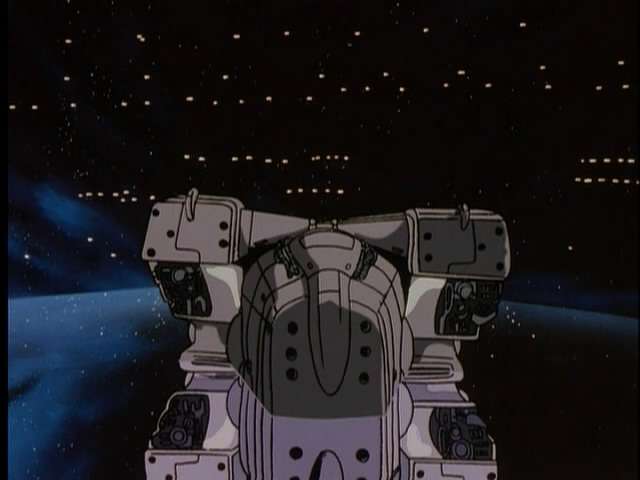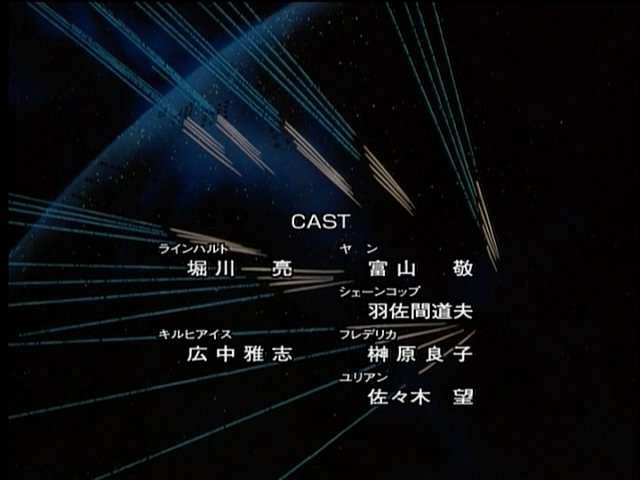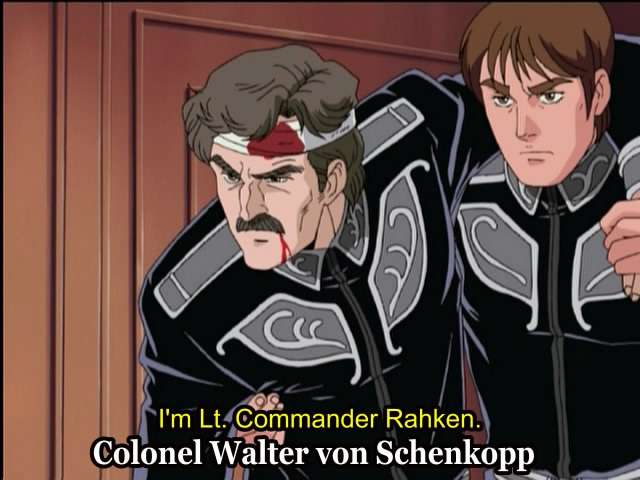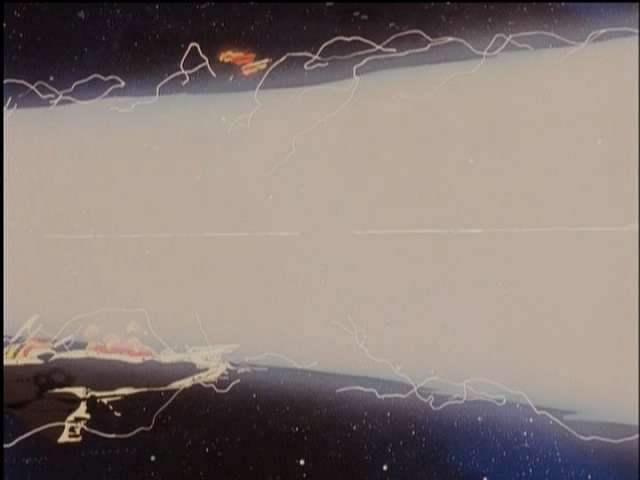I thought it might also provoke some discussion from other LOGH fans so I might edit it as well.
This first one took me quite a while - its the first battle of the series, and whilst it was originally covered in the first two episodes of the show when it first aired, it was "remade" in more detailed, movie form in 1993 as Overture to a New War. I've treated that version as 'canon', since the two do conflict on some points, although only one of them is major (and I don't go into it here, since it involves characters). That said, for anyone who plans to watch the show, you should start with My Conquest is a Sea of Stars, which was the pilot movie for the series (and covers the Fourth Battle of Tiamat), then Overture to a New War which picks up right where it left off. You can then skip the first two episodes of the series if you like and go from episode three.
Although it's out of order, I'll probably cover the Fourth Battle of Tiamat in the next entry.
The Battle of the Astarte System
The Battle of the Astarte System in Space Year 796 (Imperial Year 487) was fought between a fleet of the Galactic Empire, under the command of High Admiral (and Count) Reinhard von Lohengramm, and the forces of the Free Planets Alliance.
Background
Fresh from his victory at the Fourth Battle of Tiamat, Count Lohengramm, unpopular with the court nobles of the Galactic Empire for his battlefield success, youth, and favor with Kaiser Freidrich IV, was sent on a military expedition against the Free Planets Alliance, contrived by Duke Braunschweig and his nephew, Baron Flegel, with the intent of having Count Lohengramm die in battle against overwhelming odds.
Duke Braunschwieig and Baron Flegel conspired to bring this about in two ways:-
a) By depriving Count Lohengramm of his trusted staff officers – in particular, Rear Admirals Wolfgang Mittermeyer and Oskar von Reuenthal (commanders of the wings of Reinhard’s fleet in the previous battle), his chief of staff, Commodore Ernest Mecklinger, and even the captain of his flagship, Captain Karl Robert Steinmetz.
The heads of the Imperial Fleet (Fleet Admirals Mückenberger, Ehrenberg, and Steinhof) agreed to do so, justifying their actions that depriving him of his officers would ‘test his real talents’.
Reinhard was angry at the obvious attempt to ‘pluck off his limbs’, but was also relieved – they had failed to transfer his trusted 2nd, Captain Siegfried Kircheis.
In the place of Reinhard’s trusted officers were:-
• Admiral Merkatz;
• Vice Admiral Staden;
• Rear Admiral Erlache;
• Rear Admiral Fogel; and
• Rear Admiral Fahrenheit.
Whilst Admiral Merkatz was a competent commander with considerable battlefield experience, his advanced age made it obvious that he was chosen so that Count Lohengramm would have difficulty dealing with him. The other personnel assignments were obviously intended to rid the Imperial Fleet of ‘problems’.
b) By leaking details of the planned expedition to the autonomous Dominion of Fezzan, on the basis that they would sell the information onto the Free Planets Alliance, who would meet the expedition with overwhelming force.
Fezzan had no compunctions about selling the information. Given the Empire’s decisive victory in the last engagement, the Fezzani Landsherr, Adrian Rubinsky, decided that allowing the Free Planets Alliance certain victory would keep the balance of power in place.
Opposing Forces
Galactic Empire
Count Lohengramm’s force consisted of 20,000 ships, under the command of his supreme flagship, the Brunhild.
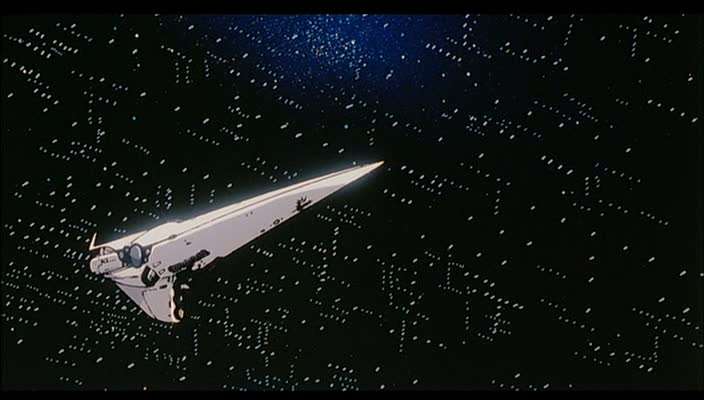
The Brunhild, or 'the white ship' as she was known to the Alliance at the time.
Free Planets Alliance
National Defense Chairman, Job Trunicht, in possession of the information on the Imperial attack, directed the Alliance fleet to meet the attack with 40,000 ships, split into three fleets:-
a) The 2nd Fleet, numbering 15,000 ships, under Admiral Paetta aboard the flagship Patroclus;
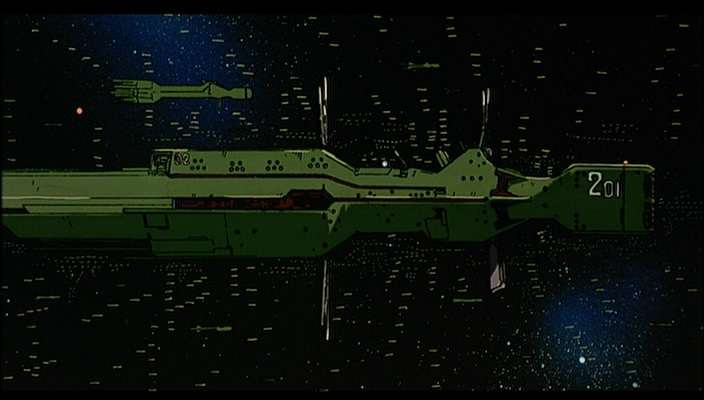
The Patroclus
b) The 4th Fleet, numbering 12,000 ships, under Vice Admiral Pastolle aboard the flagship Leonidas and
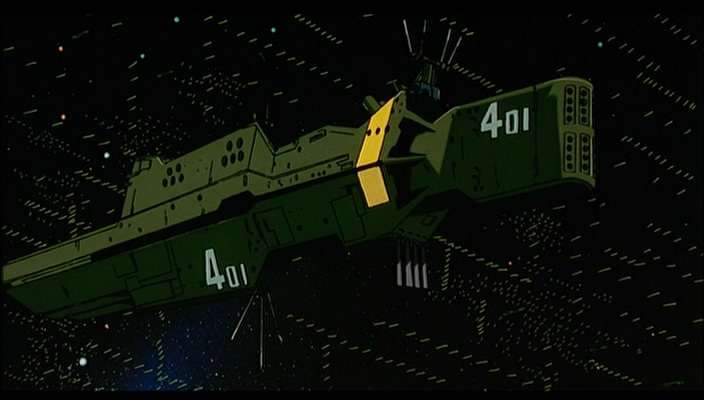
The Leonidas
c) The 6th Fleet, numbering 13,000 ships, under Vice Admiral Moore aboard the flagship Pergamon.

The Pergamon
Preparations for Battle
Free Planets of Alliance
The three fleets would intercept Lohengramm’s fleet from three separate directions, forming a ‘perfect envelopment’ and destroying Lohengramm’s fleet in the process. This was a replica of the strategy used in the historic Battle of the Dagon System, where the Alliance under High Admirals Lin Pao and Yūsuf Topparol had similarly gained a perfect victory.
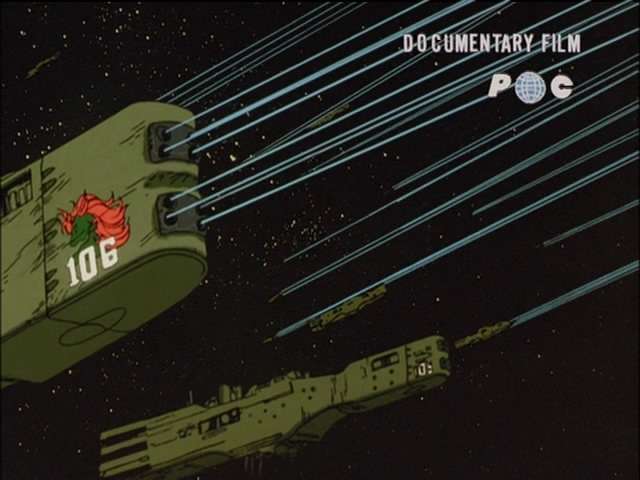
Alliance battleships at the Battle of the Dagon System
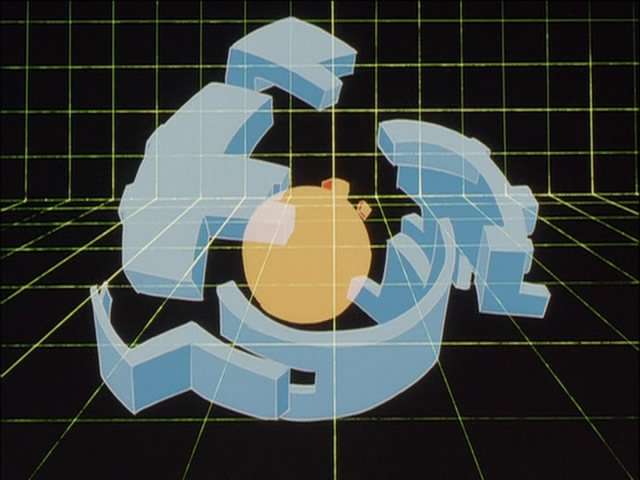
The grand encirclement at Dagon
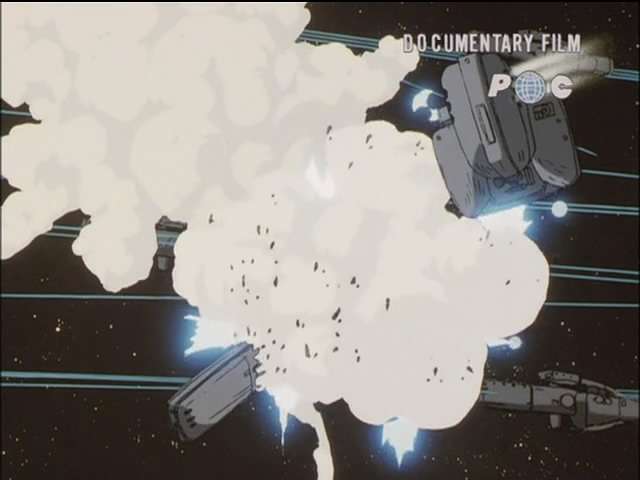
The annihilation of the Imperial Fleet, under Grand Duke Herbert
The 4th fleet would deploy to the centre, the 6th fleet to the right, and the 2nd fleet to the left (from the perspective of the Imperial fleet).
Galactic Empire
Count Lohengramm had already anticipated the Alliance plan of attack. This was confirmed by scouting forces.
The five admirals under Lohengramm's command voiced their concerns that they were in an extremely disadvantageous situation, and that they should retreat.
These concerns were dismissed out of hand – Reinhard noted that they were not, in fact, outnumbered by the enemy – but that each enemy fleet was inferior in numbers to their own.
Therefore, they would simply move the battlefield as required, and attack each Alliance fleet in turn (starting with the 4th Fleet to the front), on the basis that, due to their central position, they could attack and annihilate each fleet in turn, faster than they could hope to combine.
“In the end, our fleet is in a superior position to the enemy, both in concentration and mobility. What can this be called, if not the conditions for victory?!” – Count Lohengramm
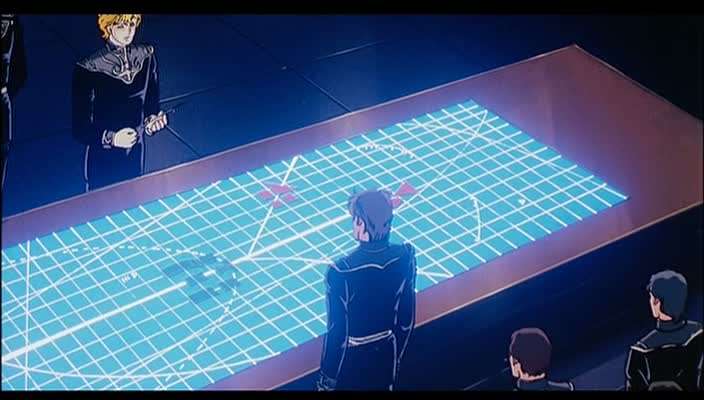
Count Lohengramm explains his plan to a skeptical Staden
Of the five admirals, only Rear Admiral Fahrenheit was satisfied. But they had no choice but to obey Lohengramm’s orders. To prevent his plans being ruined by sabotage or poor performance by the dissatisfied officers, Lohengramm agreed with Kircheis that Rear Admiral Fahrenheit should be placed in the vanguard.

Rear Admiral Fahrenheit looks on Lohengramm’s plan with approval
The contingency plan of Commodore Yang Wen-li
Aboard the 2nd fleet flagship, Commodore Yang Wen-li, a staff officer, presented an alternate plan that was far more conservative than the Alliance plan for ‘perfect victory’. It was rejected by Admiral Paetta on the basis that, even though it was hard to beat strategically, it was overly conservative and cautious, and would merely ensure that the Alliance would not be defeated, rather than guarantee the annihilation of the enemy.
The battle with the 4th Fleet
Alliance reconnaissance advised Admiral Paetta that the Imperial fleet was not at the expected coordinates, and was advancing rapidly on the 4th Fleet. The development was met with disbelief. Refusing to believe what was right in front of him, Pastolle wasted time arguing with his staff officers before sending an urgent message to the 2nd and 6th fleets for assistance. The message was jammed.

“You damned incompetent, you’ve reacted too late.” – Count Lohengramm
The Imperial vanguard under Rear Admiral Fahrenheit fired the first shots of the battle. Taken by complete surprise, Imperial Valkyrie fighters were already wreaking havoc amongst the Alliance capital ships before their own Spartanian fighters could be launched.
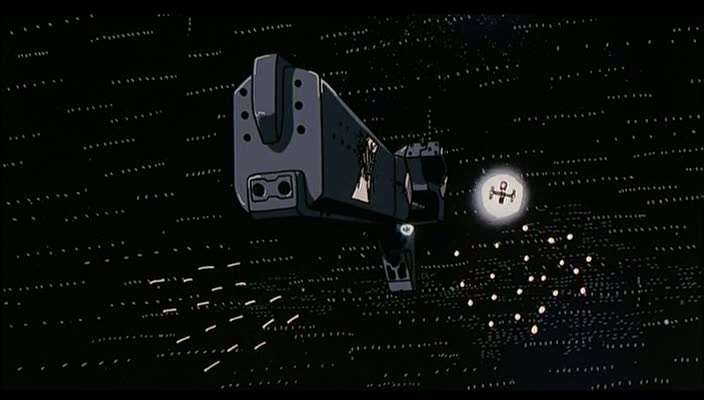
Rear Admiral Fahrenheit's flagship Darmstadt launches Valkyries

Valkyrie fighter attackp
Vice Admiral Pastolle ordered an immediate launch, but to no avail – the majority of the fleet’s Spartanian fighters were destroyed whilst docked on their carriers.


An Alliance carrier is destroyed, with its full fighter complement.
Admiral Merkatz’s forces also made a substantial contribution by the deft employment of a ‘blitzkrieg group’ consisting of small gunships. Under no danger of fighter attack, the gunships also exacted a punishing toll.
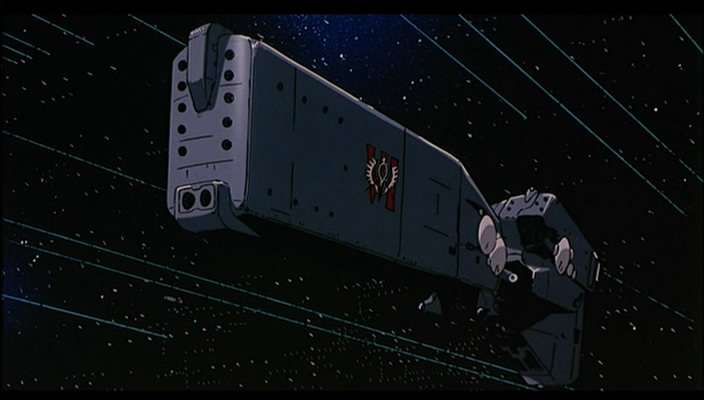
Merkatz's flagship, the Nördlingen
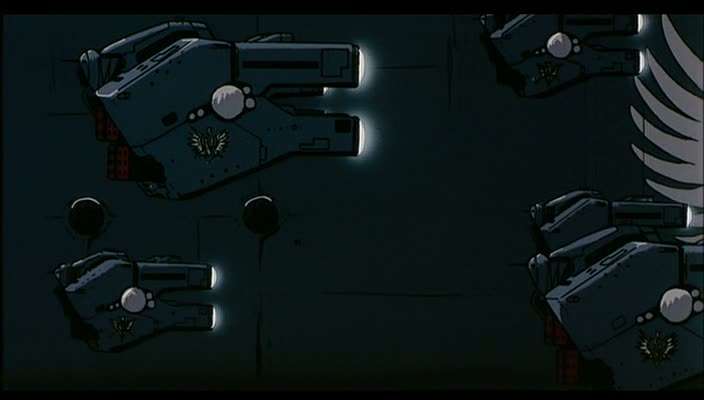
Imperial gunships advance
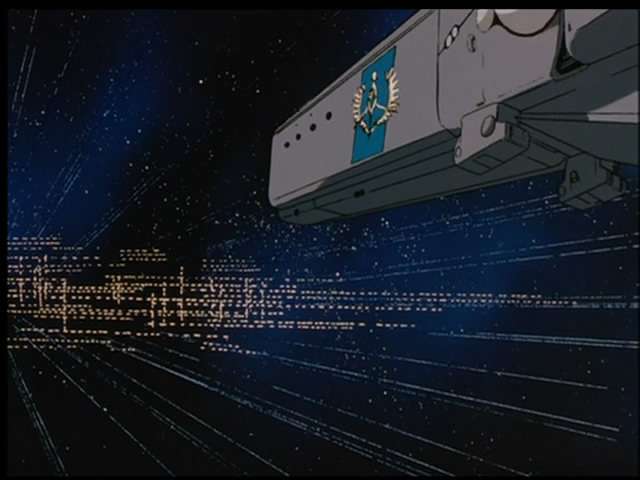
Rear Admiral Fogel's flagship Watzmann charges
Soon, the flagship was hulled near the bridge. Vice Admiral Pastolle was pulled into the vacuum of space shortly before the Leonidas exploded, and organized resistance ceased.

Vice Admiral Pastolle is sucked into space
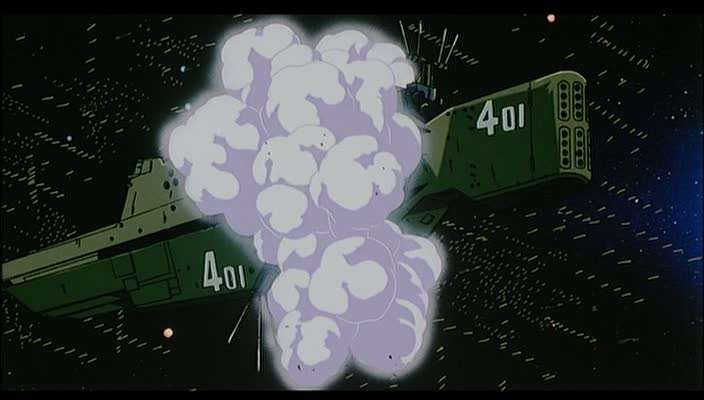
The Leonidas breaks up
Victorious, Count Lohengramm gave orders that the fleet would advance, changing course clockwise, and attack the right flank of the 6th fleet. Staden, Erlache and Fogel comforted themselves on the Augsburg, Vice Admiral Staden's flagship:-

The Augsburg

Fogel speaks his mind
Admiral Paetta’s decision
Admiral Paetta had received sporadic battle reports through Imperial jamming, before a loss of communications. Unable to contact the 4th Fleet, Admiral Paetta asked what Commodore Yang thought of the situation.
Yang correctly summarized Count Lohengramm’s plan. Yang argued that the 4th Fleet was certainly already defeated, and that they should move immediately to join up with the 6th fleet, face the enemy with a combined total of 28,000 ships, and thereby be in a position to fight on more advantageous terms.
Admiral Paetta did not take Yang’s advice. Unwilling to believe Vice Admiral Pastolle, a veteran of 100 battles, would be so easily defeated by someone as ‘young and inexperienced’ as Count Lohengramm, he decided to move to assist the 4th fleet rather than attempt to navigate the quicker route to the 6th.
Battle with the 6th Fleet
Four hours after the defeat of the Alliance’s 4th fleet, the Imperial fleet made contact with the 6th Fleet. The first Imperial ship was spotted at the rear of the fleet, whilst the command staff was having a meal.
Refusing to believe the enemy had moved the battlefield, the first shots impacted the flagship before Moore had an opportunity to arrive on the bridge.

Vice Admiral Moore is caught in the elevator.
Taking substantial losses from the attack to their rear, the 6th Fleet’s ranks promptly crumbled.
Admiral Merkatz, proving his worth again, ordered his forces to switch to short-range battle and break through the enemy formation.
Vice Admiral Moore ordered a reverse course change in response. The orders did nothing but cause confusion and heighten casualties.
Amidst the carnage, Valkyrie fighters assaulted the Pergamon, inflicting heavy damage especially to the ship's reactor.

The Pergamon is strafed.
Once more, the Alliance had been caught unawares, and Spartanian fighters were still aboard their carriers. Again, they were mostly destroyed before they could launch.
At this stage, Siegfried Kircheis suggested to Count Lohengramm that they offer the 6th fleet a chance to surrender. Count Lohengramm agreed.
An Imperial battleship sent a luminous signal as follows to the Pergamon:-
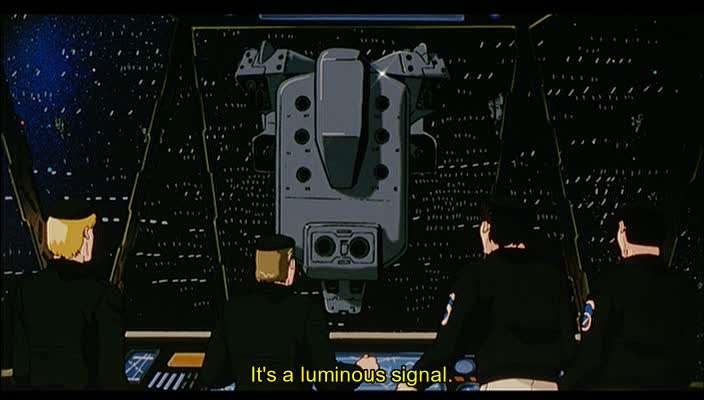
“Your ship is completely surrounded. There is no path of escape. Surrender. We promise lenient treatment.”
Enraged and unwilling to accept the disgrace, Vice Admiral Moore instead decided on a final charge.
Surrounded by Imperial ships, the Pergamon was promptly destroyed.
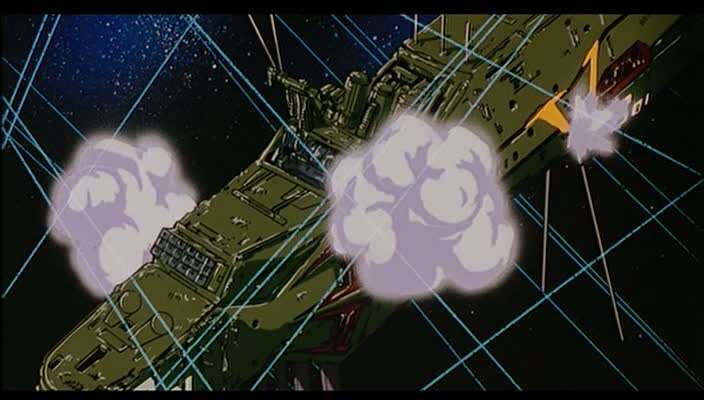

Pergamon is destroyed.
Battle with the 2nd Fleet
The Imperial fleet attacked the 2nd fleet from the 1:20 direction. In the first seconds of the battle, the Patroclus was hit near the bridge. Admiral Paetta, wounded by falling debris, turned over command to Commodore Yang, the highest ranking uninjured officer, before falling unconscious.

“By the Commander’s orders, I am taking over command of the fleet. Don’t worry, if you follow my orders, we’ll be saved … We’re losing at present, but the essential thing is that we should win at the last moment. We won’t lose.”
Yang gave orders for each ship to concentrate on individual bombardment until he issued further orders. Lohengramm, listening in, was amused. In response, Lohengramm ordered his fleet to take a spindle formation, with the intent of breaking through the centre of the Alliance formation.
Anticipating this, Yang had already made inputs to the fleet’s strategic computers, with the intent that on giving the order “open the C-4 circuits on the ship’s strategic computer”, the 2nd fleet could take the appropriate countermeasure. Even if the Imperial fleet intercepted the message, they would not be able to decipher it.
The order was transmitted as soon as the Imperial fleet charged. In the midst of the melee, the Alliance fleet gave way on both sides, allowing the Imperial fleet to pass through the centre, and reforming behind the Imperial fleet, with the intent of attacking their rear. The Imperial fleet’s breakthrough tactic had been turned around against them.
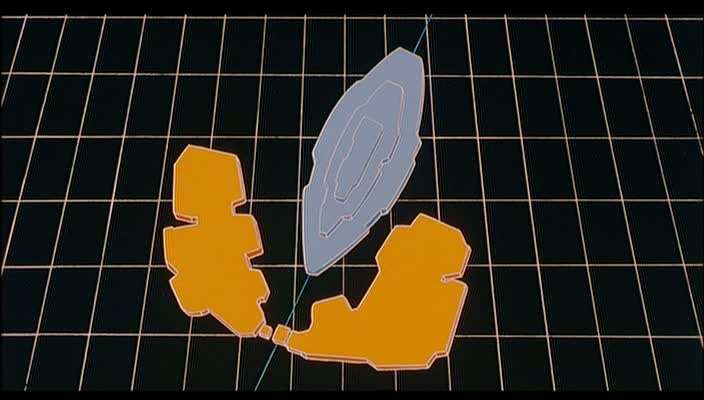
The Alliance tactical display shows the situation as Lohengramm charges

The Imperial display shows Yang’s fleet giving way
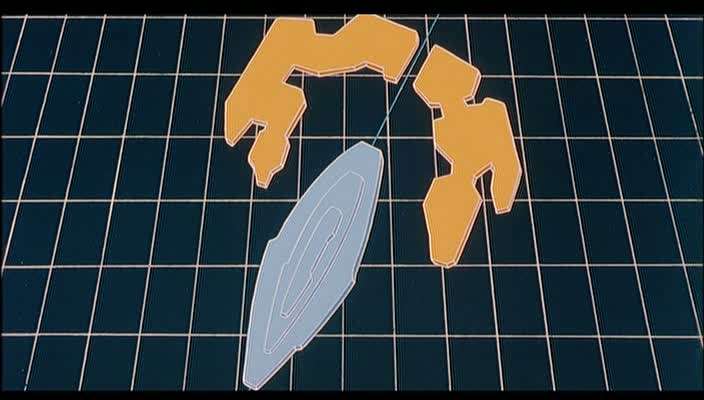
The situation is reversed
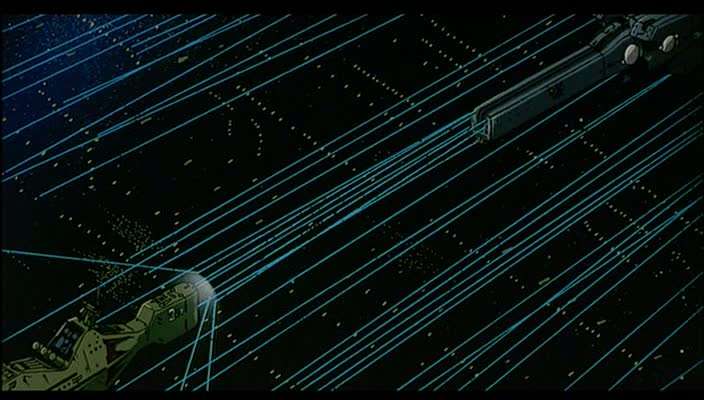
Patroclus has a close encounter with the Battleship Kärnten
After overcoming his surprise, Lohengramm quickly recovered. Refusing to be an “imbecile”, Count Lohengramm ordered the fleet to continue advancing, clockwise, with the intent of turning on the enemy’s rear, rather than reverse course and cause a debacle through confusion.
Rear Admiral Erlache, intent on obtaining a personal achievement, scoffed at the orders, and ordered a rapid reverse course change. Before his battleship Heidenheim could finish its turn, she was destroyed by a close-by Alliance ship.

The Heidenheim

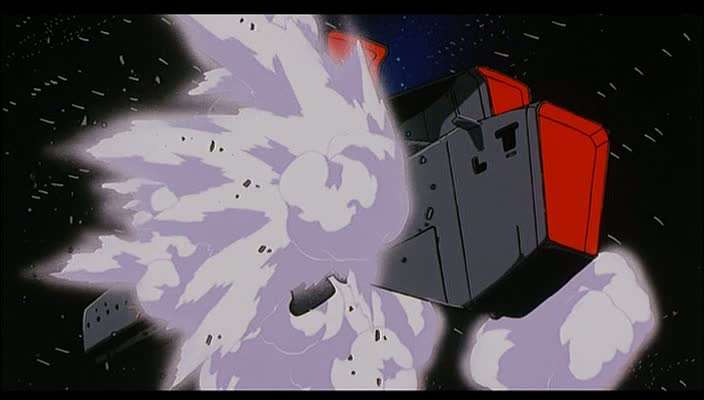
“He got what he deserved.” – Count Lohengramm
The battle then devolved into a highly unconventional formation, with both fleets elongating out into an enormous ring, like the heads of two snakes trying to devour each other’s tails.


The awkward battlefield.
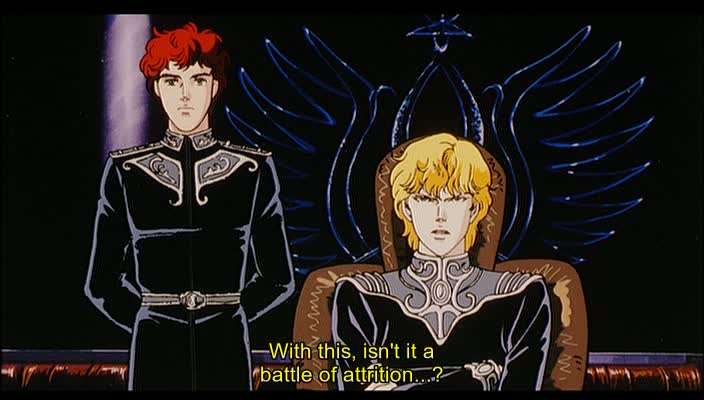
Recognizing the battle had devolved into a battle of attrition, with neither side capable of achieving a clear victory, both Commodore Yang and Count Lohengramm decided to break off the battle as pointless.
“Expressing respect for your brave fight; your health until the day we fight again.” – Count Lohengramm, message sent to Commodore Yang after the battle.
“He means “The next time we meet, I’ll smash you to bits.” – Commdore Yang.
Aftermath
Casualties
The Imperial fleet suffered 150,000 casualties.
The Alliance fleet suffered 1,500,000 casualties.
The battle cemented both Count Lohengramm and Yang Wen-li’s reputations as masterful commanders. Upon his return Count Lohengramm was immediately promoted to the rank of Fleet Admiral, and was given his own Admiralty, where he promptly began gathering young talent around him to support him in future battles. He arranged for Kircheis to be promoted to the rank of Rear Admiral.
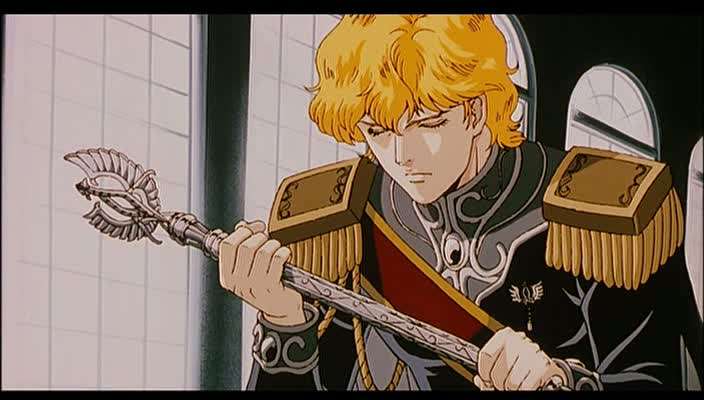
Lohengramm takes up his promotion as Fleet Admiral

Reinhard’s Admiralty
Commodore Yang Wen-li was promoted to the rank of Read Admiral and appointed commander of the newly created 13th Fleet – its first task, the capture of Iserlohn Fortress.






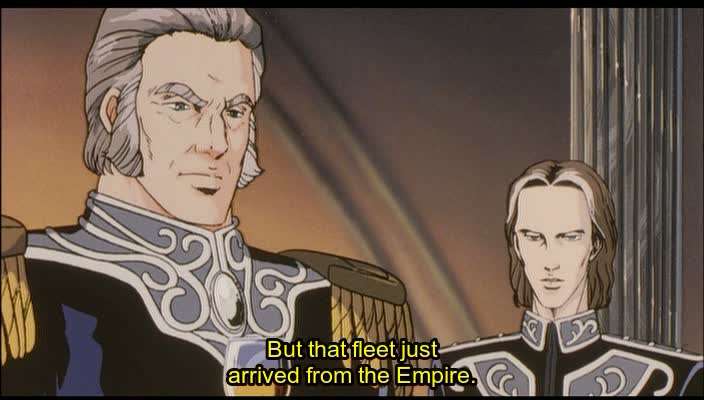
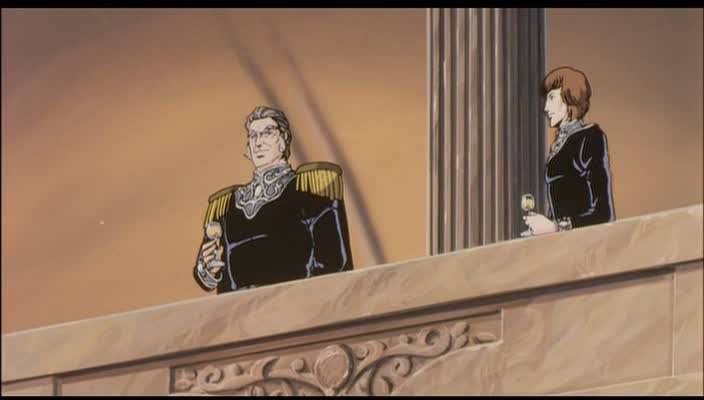
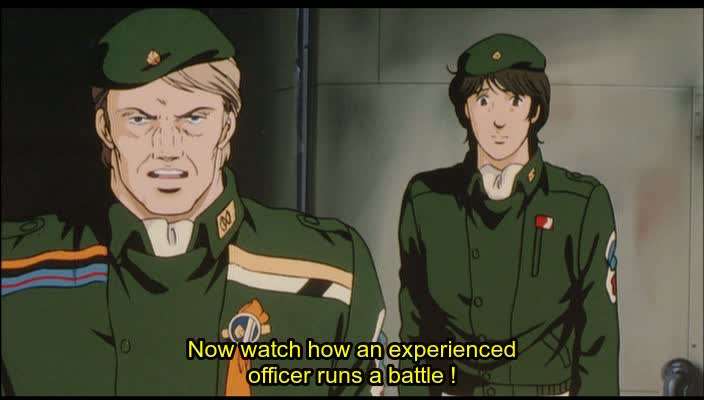
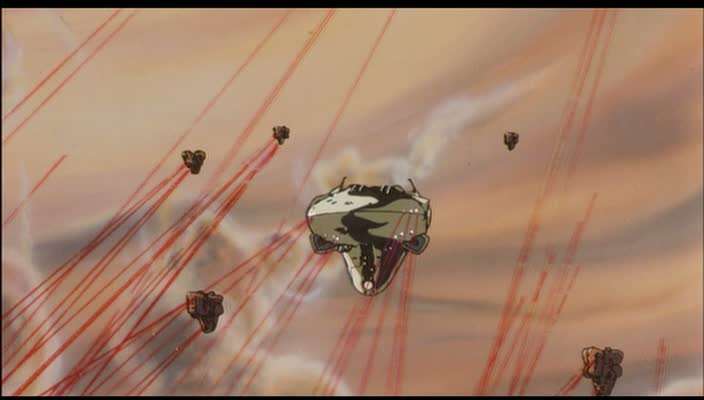

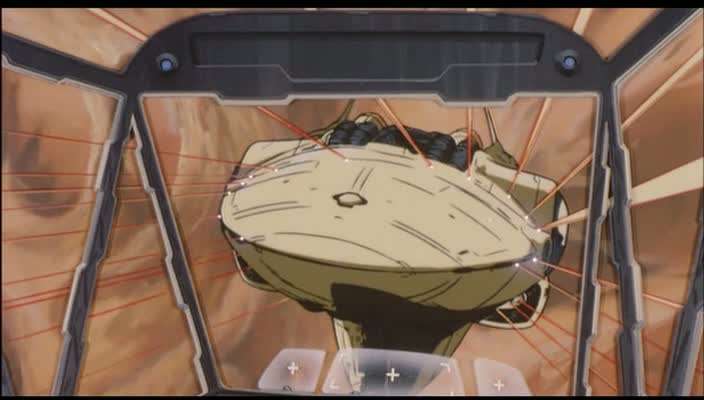
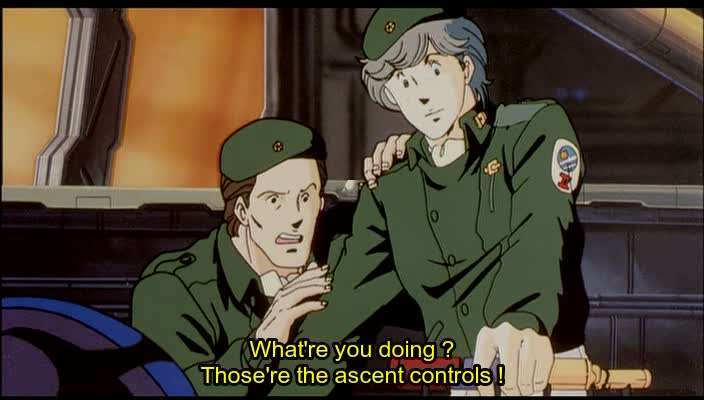 Oops!
Oops!